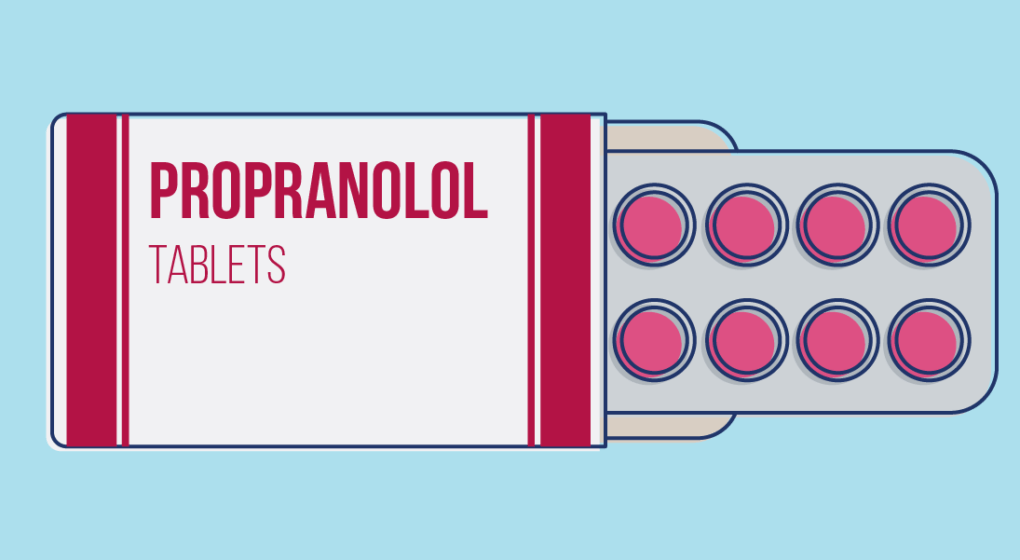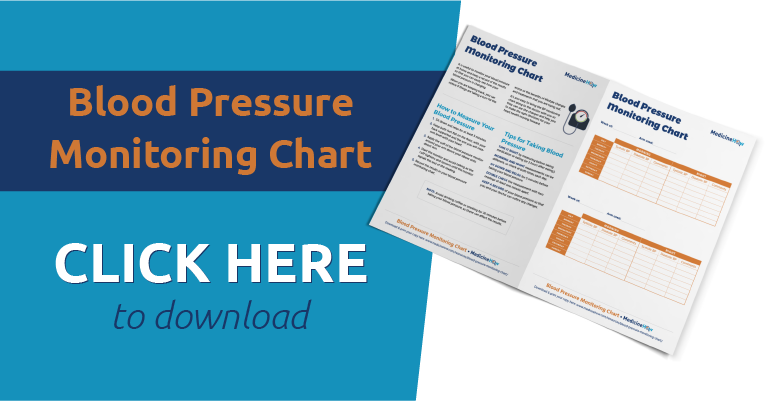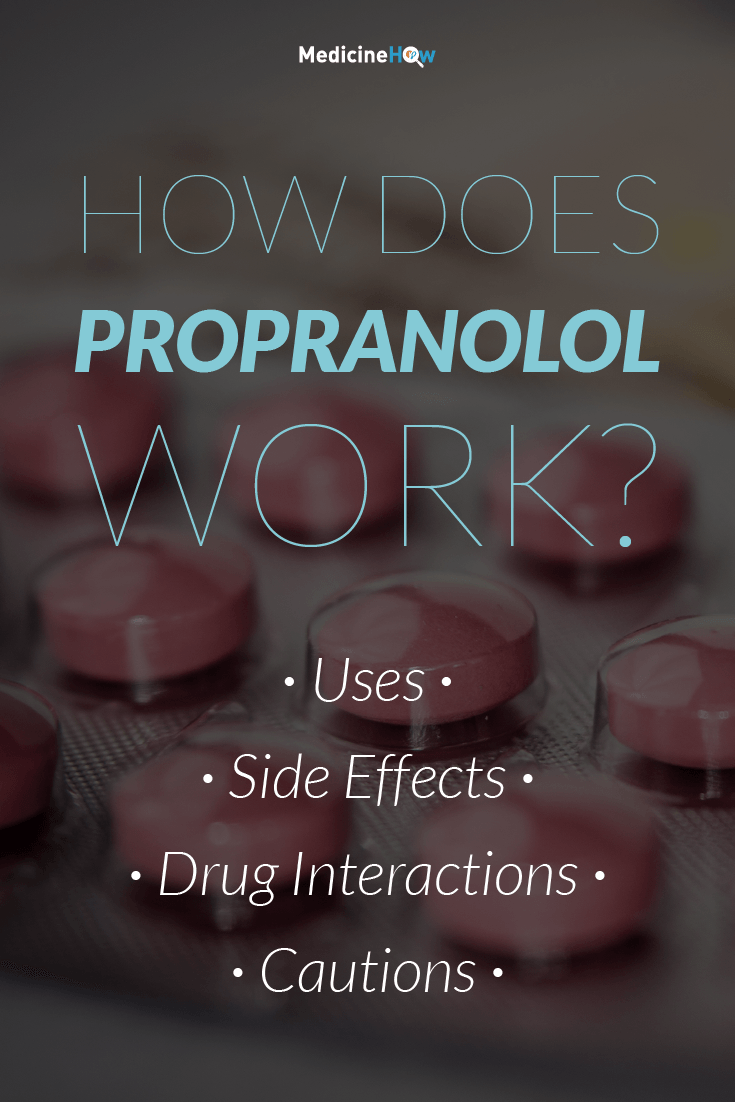
Propranolol is a type of drug called a beta blocker, which works by blocking certain receptors in your heart to lower your heartbeat and blood pressure.
If you or someone you know takes propranolol for a health condition such as high blood pressure, is important to understand how it works to help you get the most out of the medication.
Brand Names and Doses
![]() Propranolol is the generic name, which is the name of the active component in the medication. There are a few different brand names with propranolol as the active ingredient. For this reason, the medication you are taking might have a slightly different name, such as:
Propranolol is the generic name, which is the name of the active component in the medication. There are a few different brand names with propranolol as the active ingredient. For this reason, the medication you are taking might have a slightly different name, such as:
- Deralin
- Inderal
Both of these brands contain propranolol and do exactly the same thing in your body. They’re just manufactured by different companies that like to call them another name.
There are two different doses available in both brands: 10 mg and 40 mg. One of the brands has an extra-strength dose, Deralin 160mg.

What type of drug is it?
![]() Propranolol is a type of drug called a beta blocker, which is a group of medications that all work in a similar way. Other beta blocker drugs include:
Propranolol is a type of drug called a beta blocker, which is a group of medications that all work in a similar way. Other beta blocker drugs include:
Even though they are all in the same drug class, there are not identical. What makes propranolol stand out?
There are two different types of beta receptors in the body: B1 receptors found in the heart and B2 receptors found in the lungs and around the body. Propranolol works on both types of receptors, meaning that it has a broader effect than some other beta blocker drugs – it can help treat more conditions but also may have more side effects.
When you take propranolol, your body excretes it in your liver by changing the drug to another substance. This makes propanolol a good option if you have poor renal function because the kidneys aren’t needed to process it. But if you have a bad liver, another beta blocker may be a better option. Also, there are some drug interactions with propranolol and other drugs that are metabolized in the liver.
How does it work?
![]() The heart is needed to push the blood through your blood vessels around your body, making it one of the most important organs. Certain receptors that are found in your heart – called beta-adrenergic receptors – tell the heart muscles to contract (for a heartbeat) and push the blood out of the heart and to where it is needed when they are activated.
The heart is needed to push the blood through your blood vessels around your body, making it one of the most important organs. Certain receptors that are found in your heart – called beta-adrenergic receptors – tell the heart muscles to contract (for a heartbeat) and push the blood out of the heart and to where it is needed when they are activated.
Beta blockers attach to the beta receptors in the heart and stop the normal molecules from activating the receptors as usual.
What happens? Your heart rate and blood pressure will usually drop because the heart muscles don’t contract as often or as forcefully.
This is actually helpful because it relieves the stress placed on the cardiovascular system – your heart and blood vessels – protecting you from a heart attack or stroke.
What is it used for?
![]() Propranolol can be used to treat several different health conditions because of the way it works, including:
Propranolol can be used to treat several different health conditions because of the way it works, including:
- High blood pressure (hypertension)
- Chest pain (angina)
- Irregular heartbeat (arrhythmia)
- After a heart attack (myocardial infarction)
- Migraine prevention
It is helpful to control blood pressure and chest pain because it helps to lower blood pressure and reduce the load on the heart pumping the blood around the body. With the same reasoning, propranolol is beneficial for someone after having a heart attack because there is less stress on the heart.
Propranolol works its effect by decreasing the heart rate, so it makes sense that it can help you if you have an irregular heartbeat, particularly if it usually beats too quickly.
Propranolol is also sometimes used to treat the fast heart beat and tremor that occur as symptoms of other health conditions, such as anxiety and hyperthyroidism. This is because it has a quicker onset of action than manmy other beta blockers, so works well in an attack situation.
Side Effects
![]() Propranolol may lead to some side effects that you notice, such as nausea, diarrhoea or a cold sensation in your hands and feet.
Propranolol may lead to some side effects that you notice, such as nausea, diarrhoea or a cold sensation in your hands and feet.
You might also have a slower heart rate than usual – but this is normal and actually means the drug is working properly because the heart is meant to slow down. However, sometimes it can get too low (less than 55 beats/minute) and then you should talk about taking a lower dose with your doctor. Likewise, you probably need a lower dose if it does its job too well and you end up with low blood pressure. Signs of low blood pressure are:
- Headache
- Tiredness
- Dizziness
- Flushing
Interactions
 chlorpromazine + propranolol interaction
chlorpromazine + propranolol interaction
Propranolol can increase the concentration of chlorpromazine and increase the risk of side effects. If using together, a lower dose of chlorpromazine may be needed.
cimetidine + propranolol interaction
Cimetidine can increase the concentration of propranolol and increase the risk of side effects. An alternative H2 antagonist could substitute cimetidine, or use a renally cleared beta blocker like atenolol.
rifampicin + propranolol interaction
Rifampicin can reduce the concentration of propranolol in the blood, so you may need to increase the dose or use another beta blocker such as atenolol.
rizatriptan + propranolol interaction
Propranolol can increase the concentration of rizatriptan and increase the risk of side effects. If using together, a low dose of rizatriptan should be used.

Cautions
![]() Propranolol is supposed to be taken daily to manage high blood pressure or other health conditions. If you stop taking it suddenly, you might experience rebound hypertension, which is even higher blood than initially because your body gets used to the drug inside your body. If you need to stop, it’s best to gradually reduce the dose and stop taking it completely after a few weeks.
Propranolol is supposed to be taken daily to manage high blood pressure or other health conditions. If you stop taking it suddenly, you might experience rebound hypertension, which is even higher blood than initially because your body gets used to the drug inside your body. If you need to stop, it’s best to gradually reduce the dose and stop taking it completely after a few weeks.
When you first start taking propranolol, you might notice some effects due to the drop in your blood pressure, such as feeling light-headed, tired and less alert. This means that it’s working, but in the beginning you should avoid driving or operating machinery until you feel alert again.
Propranolol is excreted in the body in the liver, where it is is metabolised. If you have a bad liver, or poor hepatic function, it may not be a good choice of drug for you.
Pregnancy and Breastfeeding
![]() There are some possible risks for the baby if Propranolol is used by women who are pregnant, but it may be the best option in some cases. A selective beta blocker, such as metoprolol is usually preferred.
There are some possible risks for the baby if Propranolol is used by women who are pregnant, but it may be the best option in some cases. A selective beta blocker, such as metoprolol is usually preferred.
Propranolol can be taken by women who are breastfeeding, although a small amount of drug may be excreted in breast milk and affect your infant. For this reason, if you decide to take propranolol, you should monitor the baby’s heart rate and blood pressure to make sure it is not having an adverse effect on your baby.


